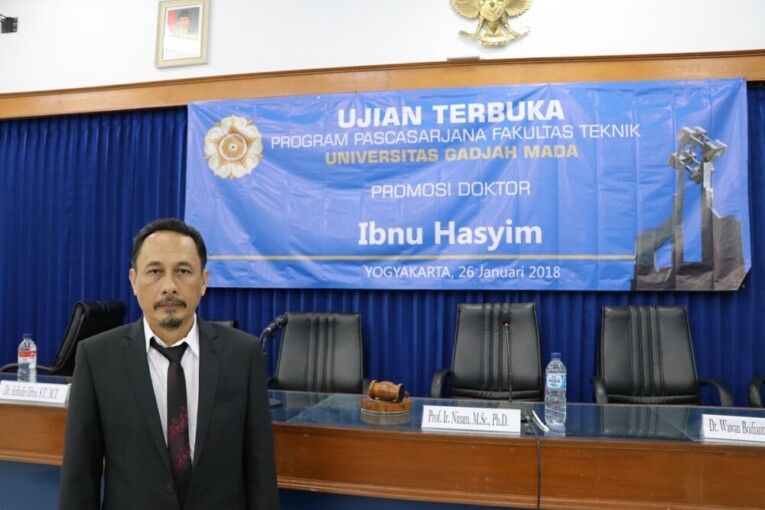
Mining activities can give both positive and negative impacts. Based on the negative side, mining will produce physical and chemical impacts toward the environment. The physical impact will lead to the change of land use (landscape, void lake, and the decrease of groundwater level). Another negative physical impact is triggering the change of the rock structure due to demolition. Chemically, the negative impact caused by mining is the decrease of surface water and ground water quality.
The negative impacts caused by mining have encouraged Ibnu Hasyim, a lecturer at Faculty of Engineering, Universitas Kutai Kartanegara, Kalimantan, to write his dissertation entitled The Influence of Chemical and Rock Mineralogy Characteristics toward Groundwater Contamination in Coal Mining, Anggana Sub-District, Kutai Kartanegara Regency, East Kalimantan. Through the dissertation, Ibnu succeeded to earn his doctoral degree at Geology Engineering UGM on Friday (26/1) at Faculty of Engineering UGM.
Ibnu conducted the research on the hydrogeological condition, groundwater chemical characteristic, and rock mineralogy in Anggana Sub-district, particularly around the mining location. Based on the research, the hydrological condition in those areas are predicted to have groundwater addition which is 680,10 mm/year. Meanwhile, based on the analysis of data from surface exploration activity, full coring, and regional geology, the order of rocks unit from the oldest to the youngest one is Balikpapan mudstone, Balikpapan quartz sandstone, Kampungbaru mudstone, and Kampungbaru quartz sandstone, respectively.
In his research, Ibnu also studied the resource and groundwater contamination level in the research areas. Based on the research as well as secondary and primary data analysis, the acid mine drainage formation in Balikpapan and Kampungbaru comes from several sources, including the Potentially Acid Forming (PAF) stone in pit and disposal. The exposed coal in pit and disposal, as well as the mine pit, also become the source of groundwater contamination.
“The groundwater contamination level in Kampungbaru formation is higher than the Balikpapan formation,” said Ibnu.


